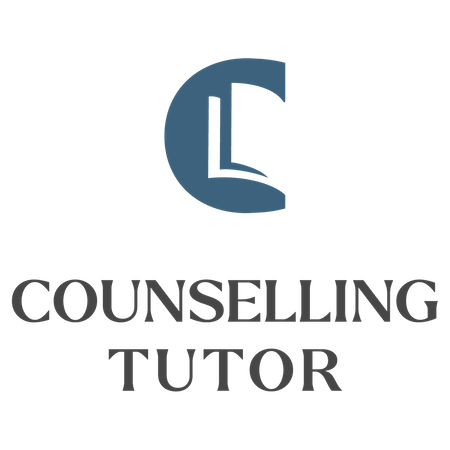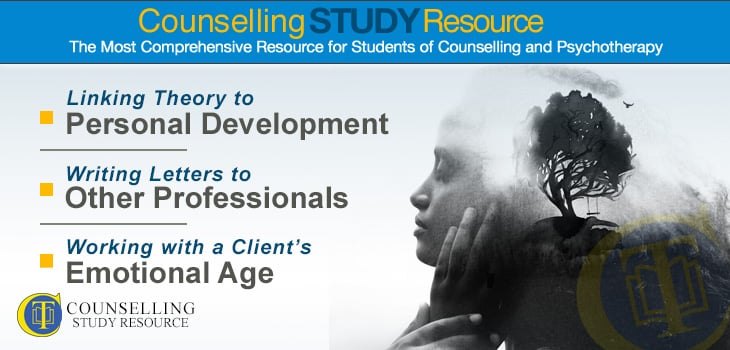108 – Linking Theory to Personal Development as a Counsellor
Writing Letters to Other Professionals – Working with a Client’s Emotional Age
In episode 108 of the Counselling Tutor Podcast, Ken Kelly and Rory Lees-Oakes describe why it is important to link theory to your personal development as a counsellor, and how you can do so. In ‘Practice Matters’, Rory explains how to write letters to other professionals. Finally, the presenters discuss the challenges of working with a client’s emotional – as opposed to chronological – age.
Linking Theory to Personal Development as a Counsellor (starts at 1.44 mins)
Why might you wish to link theory to your own personal development as a counsellor? Ken and Rory suggest that there are four key reasons to do so:
- As a counsellor, you are going to be applying theory to your clients’ development – so it makes sense and is consistent to apply it to your own too.
- Linking theory to your own development gives you a better understanding of your own process, increasing your self-awareness and so making you a more effective and safer therapist.
- Your ability to link theory to your personal development as a counsellor is often assessed through assignments on counselling training courses.
- Even after you qualify, continuing to apply theory to self (including any new theories learned through continuing professional development) is interesting and developmental.
This is a topic that crops up regularly in our Facebook group (where you’ll find over 22,000 others involved in counselling and psychotherapy, including students, qualified counsellors, supervisors and tutors).
Ken and Rory offer several tips on how you can link theory to your own personal development:
- Make a list of the key terms from the theory of your modality; keeping this in front of you, go through each term and reflect on how this might apply to you yourself.
- Try using the Johari window, working with peers on your course to learn about parts of you that others might see but you can’t – so broadening your view of self.
- Consider writing an unsent letter (a gestalt-therapy technique) about any ‘unfinished business’ with key others in your life; this may be best done with support, as it can be a very emotive exercise.
Writing Letters to Other Professionals (starts at 12.22 mins)
Rory looks at situations when you might need to write a letter to another professional – for example, when you need to refer a client (e.g. someone with a more complex psychiatric disorder or suicidal ideation) or when you are called on to evidence their attendance at therapy (e.g. to a court, solicitor or employee assistance programme).
Rory explains how to balance confidentiality with the needs of the person requesting or receiving the information, applying the Caldicott principles on information-sharing.
Working with a Client’s Emotional Age (starts at 24.09 mins)
A client’s emotional age may not be the same as their chronological age.
This can hold especially true for adults who were abused or suffered significant emotional challenges (e.g. close bereavement) in younger years. Such experiences can lead them to regress to that past age when they are reflecting on what happened then.
Ken describes how the misuse of substances (e.g. alcohol and drugs) stops people processing their emotions; thus, they too may revert emotionally to the point where they started using substances in this way.
Ken and Rory provide tips on how to work effectively and safely with such clients:
- Try not to detach yourself from the physical appearance of the client (which tends to show their chronological age), trying instead to listen to their voice: how old do they sound? It can help to close your eyes to do this, if possible.
- Body language can also be a good indicator of the emotional age of a client. For example, do they look small and vulnerable when talking about a particular experience?
- Always work in a way that fits the client’s emotional rather than chronological age at that time.
- Be aware that this age can change within and between sessions – so be alert to shifts, and ready to adapt to this changing emotional age. This is advanced-level counselling.
- Attend carefully to how you use language, ensuring that you tailor this to the emotional age of the client at any particular time.
- Ensure that the client doesn’t leave the session at their regressed age; you may need to remind them of their chronological age, carefully and gently bringing them back into the here-and-now.
- Always check with the client before they leave the building that they feel safe and strong enough to go back out into the outside world.
Rory has recently delivered a lecture on preparing to work with young people; the learning in this can usefully be applied to older clients whose emotional age is more in line with that of a young person. You can watch the lecture here.


